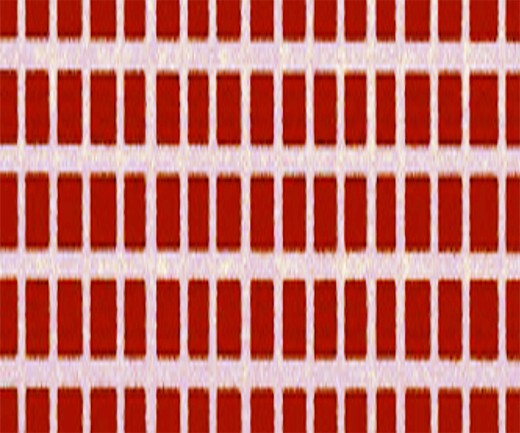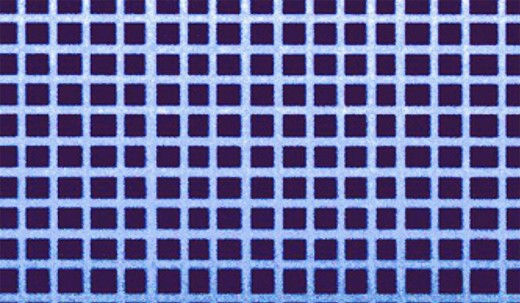Designing with Wire Mesh
The Versatility of a Simple Building Material

Metal Mesh in Architecture and Construction
Like many of us, you may have first encountered thin metal mesh in a screen door banging shut behind you as you headed off to school. Or perhaps, throughout recent years, you have noticed the increasing use of a variety of wire meshes, fins, baffles, screens, and perforated metal panels in the architecture and construction of structures of all types.
Wire mesh goes by many names throughout the design and construction trades. In the past, fine wire mesh or screening was sometimes referred to as builder’s cloth. It may also be called fencing, screening, mesh, wire mesh, wire cloth, architectural mesh, or architectural wire cloth. When of a large and rigid scale, as, for example, reinforcing used in slabs and walks, it may be referred to as welded wire fabric. The basic design almost always begins the same way: wires running in several directions, interwoven in the fashion of a cloth, with gaps of a certain size between wires. But there all similarities among meshes end.
Woven Wire Mesh
The wires woven into the final mesh may be as fine as 1/1600th of an inch, or as hefty as 5/8” in diameter. Those wires may be of conventional steel, or steel that has been coated, painted or otherwise processed for special finish or effect. They may also be of heat-resisting steel, varieties of nickel/steel/chromium/molybdenum alloys, or stainless steel. The wires may remain round, may be ovoid or asymmetrical, may be crimped and flattened at spots, or may be shaped instead as flat ribbons. Still more individuality is produced by varied weaving patterns. Square openings created by equal size wires meeting at 90-degree angles at uniform spacing in both directions result in a typical uniform screening mesh. But if those spacings stretch to asymmetrical, linear openings, as the wires double or triple in groups, we see instead a ‘plaid’ or ‘tartan’ textured appearance, with areas visually and physically ‘busier’ than others. Long, linear openings may aid sun-shading if oriented horizontally. Or they may accentuate a space’s height and drama if oriented vertically. If the crimp or offset of crossing wires projects only beyond one face of the mesh, we get a far different visual effect than if that crimp projects beyond both faces of the mesh. We may choose all rigid wires, for strength and durability. Or we may choose wire ‘rods’ running in one direction, with cable ties running in a perpendicular direction, if we are seeking a fluid and flexible wire ‘curtain’. The final wire mesh product may have almost any degree of solidity/openness or opacity/transparency that is desired. The open area of wire mesh — that percentage of its surface area occupied by nothing but air — may range from as little as 5% to as much as 85%.
Change Rhythm, Pattern, Shape, Gauge, Metal, Finish, Color

Design Uses
Architectural woven wire mesh can be used in mesh ‘panel’ sizes ranging from just a few feet across to those running uninterrupted 100 feet or more. The mesh industry has developed numerous types, styles and shapes of edges, frames, trims, connectors and attachments suited to the particular needs of each design project.
The uses of woven wire mesh are myriad. One of its most traditional uses is as an essential screening and filtration product in a variety of industries — food preparation and processing, water treatment, chemical production, plastics, paints, aviation, and automotive, among others. But increasingly architects are using wire mesh as a visual design element with its own particular appeal and benefits. Those benefits include: as a safety or security barrier; as a solar shading device; as an enclosing material that permits the passage of breezes, daylight and sound; as a decorative finish conducive to dramatic lighting and visual effects; and as a surface appearing semi-solid, or transitional over time. Wire mesh applications can be as building façades, as ceilings, as in-fill panels; as decorative overlay surfaces; as wall cladding; as sun shades; as partitions; as guard rails; as view screens around equipment or service areas; as signage or sign backing. The range of applications is limited only by the designer’s imagination.
Sustainable Metals
Recently, because of its environmental benefits, wire mesh has had increased appeal as a ‘green’ screening material. First, much wire mesh is fabricated from recycled materials, and mesh itself can be recycled. As most mesh is fabricated, cut, trimmed and fitted to final applied size in a shop or factory, on-site and overall waste are minimized. The steels used in making mesh are durable products with long life cycles. Mesh provides effective sun shading and re-radiation, thus reducing the demand for and cost of energy, and can contribute to improved occupant views and air quality. All these features work to the advantage of long-term sustainability.
- Using Solar Energy
Have you ever considered making use of solar energy? Unsure how to get started? Let this architect show you the way. - Double Glass Walls in Architecture
Blue reflective glass, horizontally banded. by rlz We’ve all heard how important it is to use double-glazed or even triple-glazed windows in our homes and offices to reduce energy demand and improve interior comfort. But how many of us have... - Sustainability: Green Roofs
Green roofs roofs that consist in part of plant material are called green, meaning environmentally friendly, for a variety of very important reasons.



